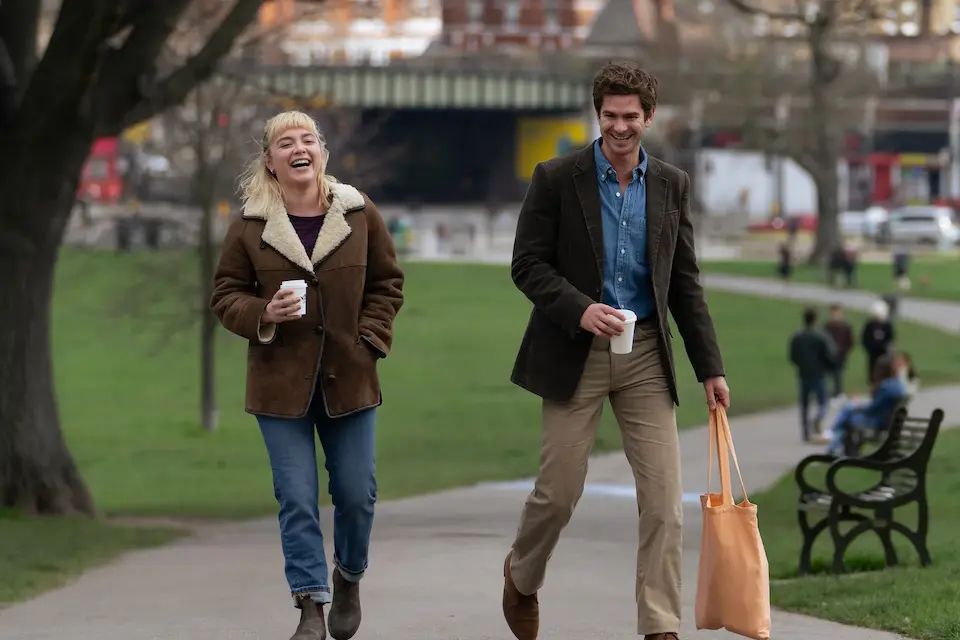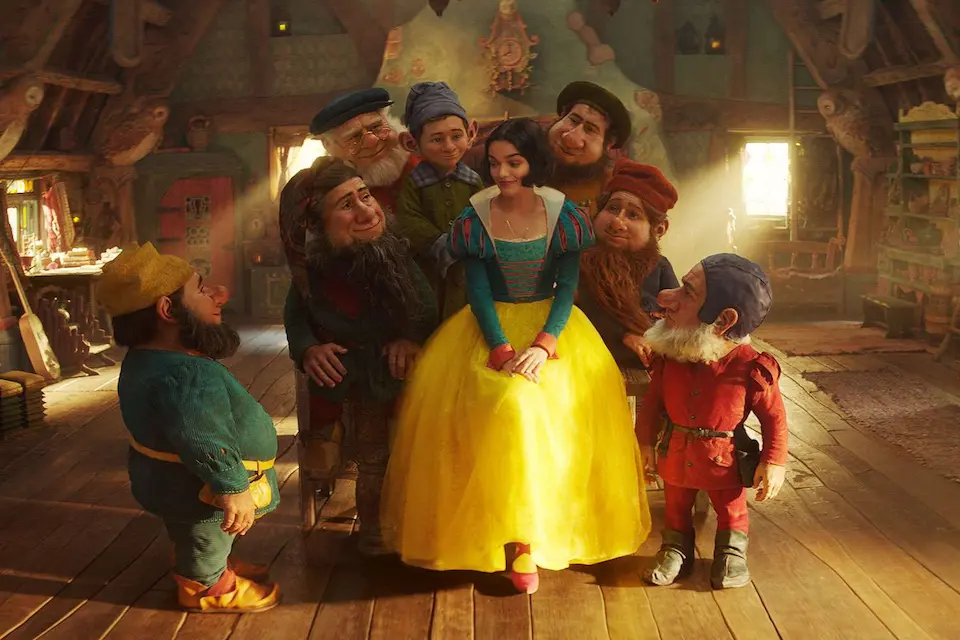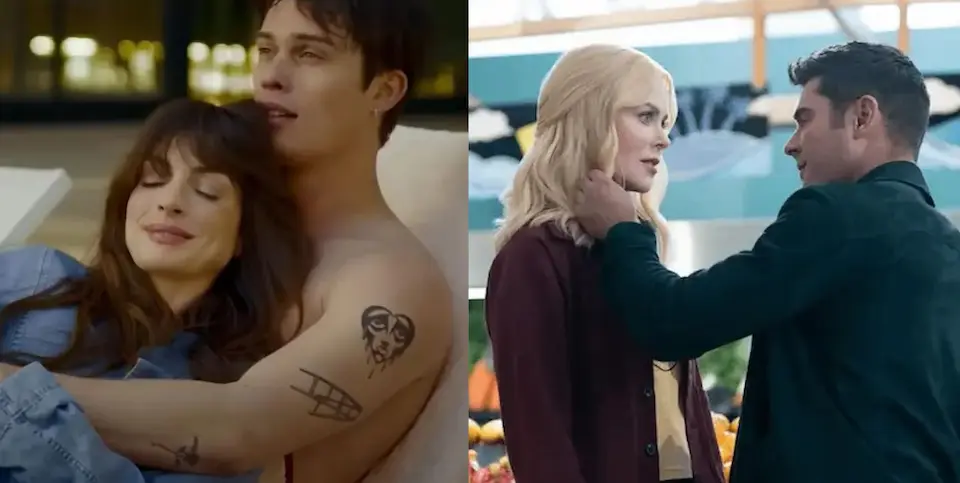“The Brutalist”: The High Price of Building a Legacy
With ten Academy Award nominations, Brady Corbet’s period drama surprises audiences with a visual spectacle of over three hours.
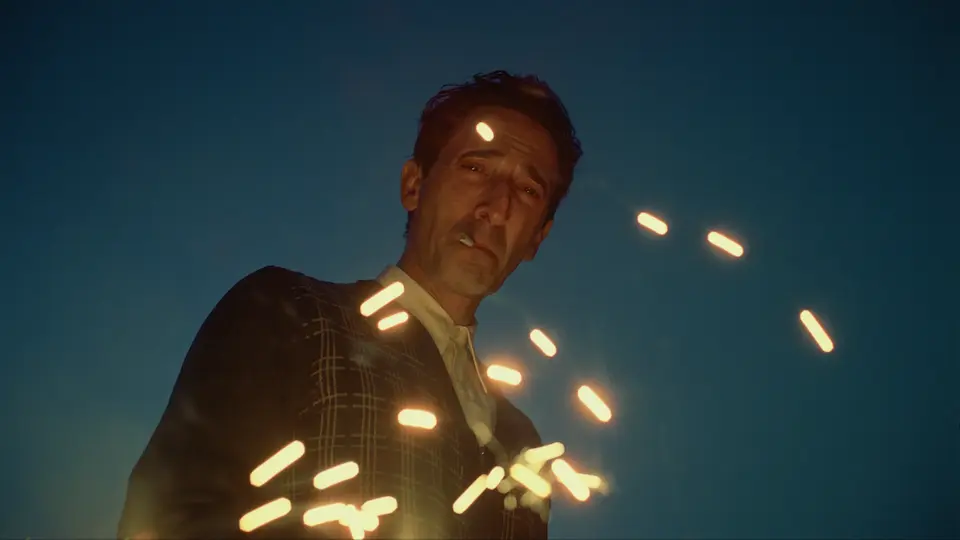
Summary
Architect László Tóth arrives in America in 1947, escaping post-war Europe. Alone in a strange land, László struggles to make things work until rich Harrison Van Buren “discovers” him. We follow the protagonist throughout the years as he fights to build his legacy.
A Brief Overview
The Brutalist is composed of an overture and a first part (The Enigma of the Arrival), followed by a fifteen-minute interlude. After that, there’s a second part (The Hard Core of Beauty) and finally an epilogue (The First Architecture Biennale).
The project was filmed in VistaVision, a format that was used until the 1960s, and the running time is three and a half hours.
This is Oscar Material
From the first few minutes, the film just screamed Oscar winner for me. That’s how I remember feeling about the award season’s nominees: visually impressive, with a powerful soundtrack and killer performances.
The first part was amazing. It focused on the visuals, but also did a great job introducing the protagonist and giving him clear motivations: László escapes the war in search of prosperity and, in time, the means to bring his family with him. Despite being a reputed architect, circumstances force him to take other minor jobs, and we follow him through a series of unfortunate events until he has a change of luck. A rich industrialist, Harrison Van Buren, is highly impressed by his work and tasks László with an ambitious project. The job comes with housing, contacts, and the chance to have his talent recognized by the world—the opportunity of a lifetime.
The Progressive Loss of Focus
The second part opens with László waiting at the train station to receive his wife Erzsébet and his niece Zsófia, who can finally join him in America after six years. We see that László’s boss and his family are not as nice to him as the ending of the first part suggested, and that the building of the community center is facing several problems. The project ends up being called off, leaving László with nothing. Years later, Mr. Van Buren contacts him once more to finish the construction, something that marks a breaking point in László’s life.
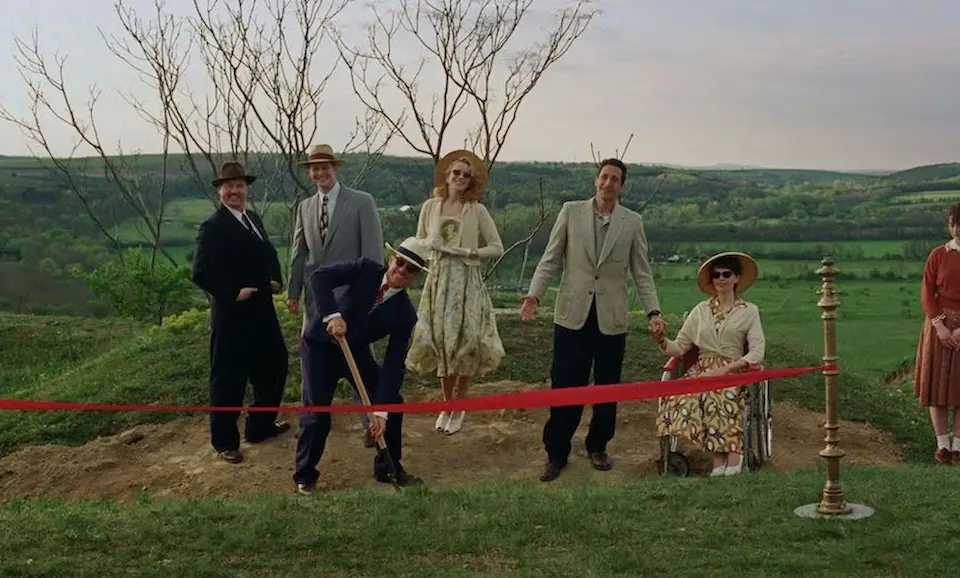
My issue with this part is that the story seems to lose direction. It’s about László and his relationship with the Van Buren family, but also about his marriage and healing the years of separation with his wife, and about his heroin addiction, and about his disappointment with the American Dream. It’s too much, and it’s presented in a disorganized way.
The protagonist’s journey becomes less and less intelligible, until events start to seem random. For example, there is a particular scene in which Mr. Van Buren sexually assaults László, an incident that, in the context of the movie, is presented as a hate crime. It’s not an overtly explicit scene (in fact, as it was happening, I was not sure if I was understanding correctly), but it feels pretty out of nowhere, and like the script was giving the character hardships just because.
What in the first half of the film makes sense and is character building; in the second comes out as exploitative. Building a legacy, the “destination” the movie describes as the be-all and end-all of László’s existence, could have been achieved without that episode; the point could have been made without it.
Cast and Performances
Even though I haven’t seen much of his other work, I have had deep admiration for Adrien Brody ever since I watched his performance in The Pianist. The scene where Szpilman tastes the jam is forever ingrained in my brain. He is an actor who has the ability to transmit a huge range of emotions, forcing the audience to experience them with him. He can make me feel sadness and despair like no other actor, and he does a great job here.
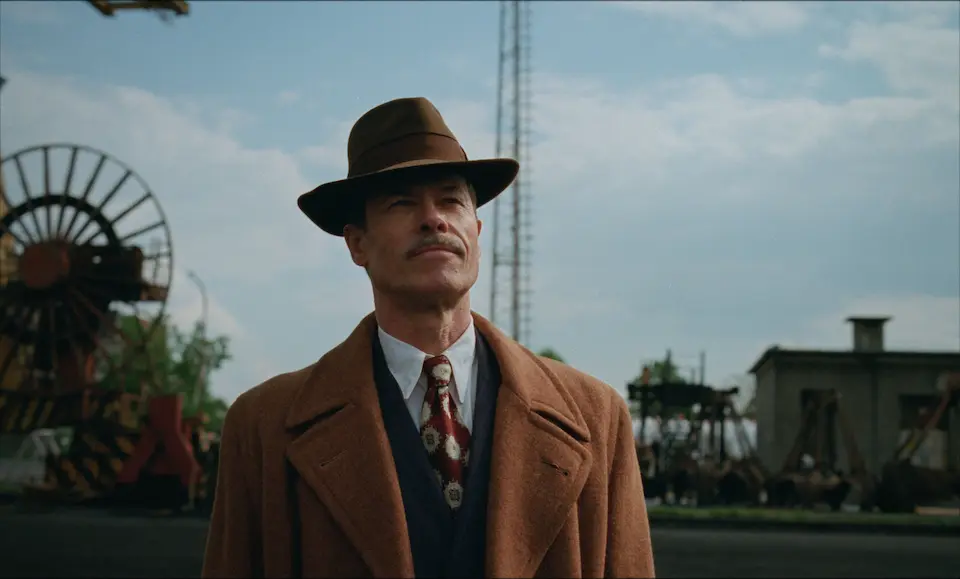
Felicity Jones and Raffey Cassidy are a good contribution. Their characters, Erzsébet and Zsófia, appear during the second part of the movie.
The one who stood out for me was Guy Pearce. Far from being the typical “rich bad guy” (a stereotype that the movie offers with Joe Alwyn’s character), Harrison Van Buren is a mix of charm and evil. He is appreciative of László’s talent, but at the same time seems to deeply resent him for it and enjoy belittling him. Harrison is charismatic while giving out a dangerous vibe.
How Many Oscars?
Watching and reviewing all the nominees has been really unpleasant this year. I’m looking forward to having it over and done with. But let’s talk about it for a minute.
While Adrien Brody was great, I don’t think he reached the heights of The Pianist. He has won many of the awards of the seasons, so he might as well take his second Oscar home. I would not be mad.
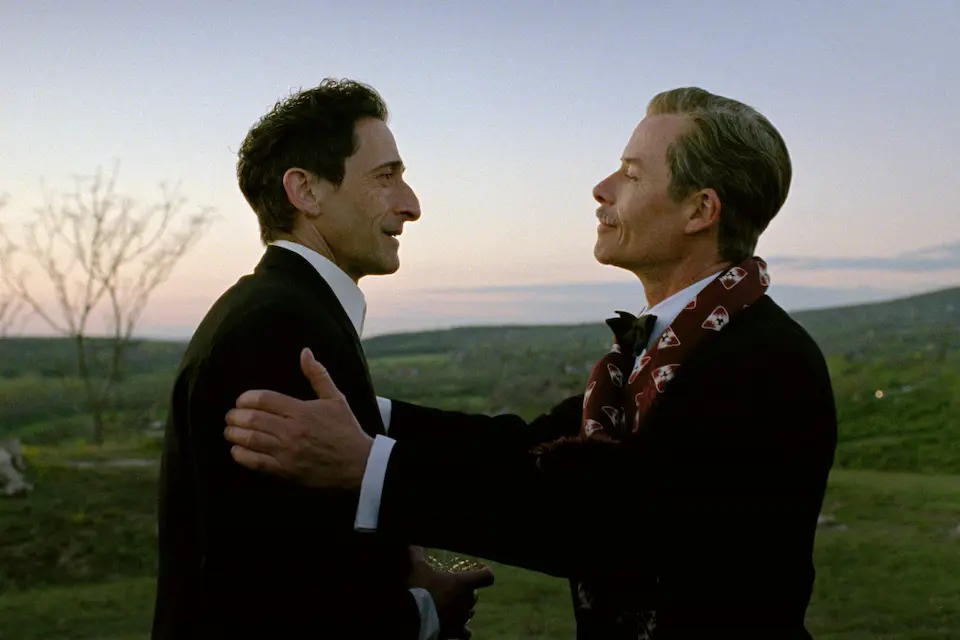
In the case of supporting actress, Felicity Jones is fine in the role; I’m not sure if it is her most impressive work, but it is one of my personal favorites in the Supporting Actress category. Monica Barbaro in A Complete Stranger is the only performance I liked more. Ariana Grande was also really good on Wicked, but I don’t think her performance is deserving of a nomination. Sadly, the most probable winner is Zoe Saldaña for her awful work in Emilia Perez. Because Hollywood, you know.
I would love for Guy Pearce to win Best Supporting Actor, but I believe the two Hollywood favorites are Yura Borisov for Anora, and Kieran Culkin for A Real Pain.
AI Controversy
It is well known that the term “artificial intelligence” has become a profanity in Tinseltown. The smallest allusion to the use of AI in a project is met with huge criticism. At least from the people inside the industry, who are dead scared of being replaced. I don’t think audiences care that much, especially considering that many movies today are so poorly put together that they could as well be made with AI.
Apparently, AI software was used during the making of The Brutalist, more specifically, to perfect Brody and Jones’ Hungarian accents. Both actors had worked with a dialect coach, but this further measure was taken to offer more authenticity to the dialogue.
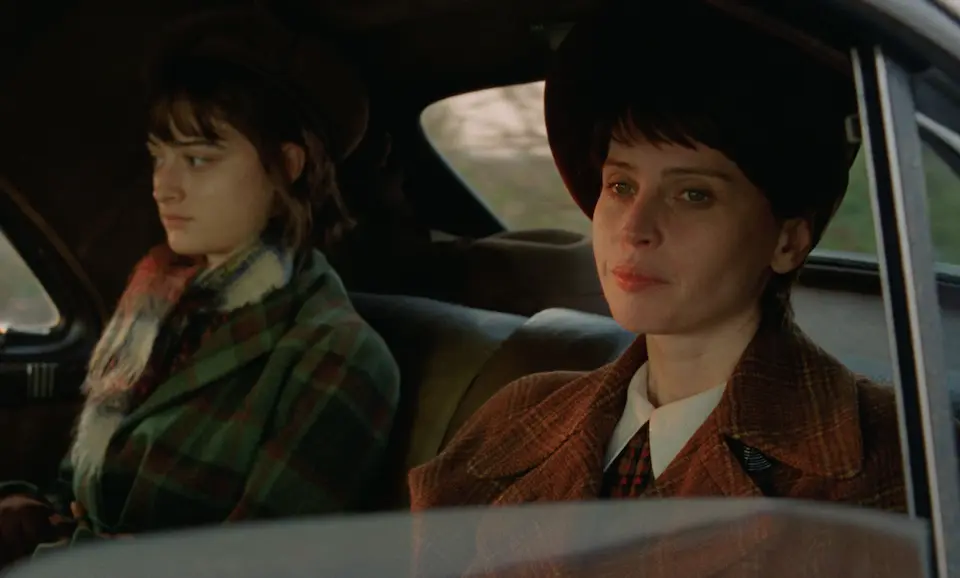
I personally find the modification pretty harmless, but knowing Hollywood’s take on it, this issue might lessen the possibility of the project winning Best Film. I would say the same about Brady Corbet’s chances of winning Best Director, but he won the BAFTA a few days ago, so maybe he still can get the Oscar. He and Coralie Fargeat (The Substance) are my two favorites.
Additionally, The Brutalist has also been nominated for Best Original Screenplay (by Corbet and Mona Fastvold), Best Production Design, Best Original Score, Best Cinematography and Best Editing—all deserved.
Critical Reception and Box Office Results
If the reported production budget is correct, I’m very impressed by how this production managed to do so much with so little. We’re talking about around $10.000.000, quite modest for the usual Hollywood projects. And especially surprising, being that The Brutalist does not look like a small movie. So far, the worldwide box office is at $30.763.888, which is pretty good.
When it comes to reception, the mainstream critics loved it, as expected. The technical aspects of the film and the performances were heavily praised. The audiences were not as indulgent, though. The reviews are still mostly positive, but there is a part of the audience that did not enjoy it at all. If you check Rotten Tomatoes, you will find plenty of reviews calling the film boring, pointless, self-absorbed, and self-indulgent. And while my overall experience with The Brutalist was positive, I have to admit these people kind of have a point.
What is More Important?
I maintain that the first part was impeccable, but the second felt longer than it should. It is a film that falls into the same predicament that many others these days: the style over substance cliché. This means the project is a vehicle to show you beautiful shots of mesmerizing places or sets, focusing more on the visuals and selling you a “contemplative” experience. And it should be recognized that the cinematography, the edition, and the music create something wonderful and immersive.
The problem with this approach is that the story tends to be neglected in favor of the visuals. Some people may excuse that as an “artistic choice,”, but I’m of the opinion that the technical aspects should be there to complement and elevate the story, not the other way around. The plot cannot be an accessory.
The Brutalist is not a film for everyone, nor one that occasional moviegoers would enjoy. If you are looking for something commercial, this is not for you. Now, if you like a “contemplative” film and find joy in projects that are technically superior, watching this movie on a big screen is going to be worth the ticket price. It certainly was for me.

